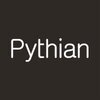Filter interviews by
GVM Technologies Interview Questions and Answers
Be the first one to contribute and help others!
Interview questions from similar companies
I applied via Naukri.com and was interviewed in Sep 2024. There were 2 interview rounds.
Test Paper Task, which is to be given in a Word Document.
1. WireFraming
2. User Story Writing
3. Use Case
4. Sequence Diagram
(19 Questions)
- Q1. Education Background and Work Experience
- Q2. How Educational Background Helped in IT Industry
- Ans.
Educational background in IT industry provides foundational knowledge, skills, and problem-solving abilities.
Educational background in computer science or related field helps in understanding technical concepts and languages used in IT industry.
Analytical and critical thinking skills acquired through education are essential for analyzing data and solving complex problems in IT projects.
Project management and communicat...
- Q3. 4 Requirement Development Component required in Req. gathering phases
- Ans.
Requirement development components in requirement gathering phases
Stakeholder analysis
Interviews with stakeholders
Document analysis
Observations
Prototyping
Brainstorming sessions
- Q4. What are Requirement Elicitation technique
- Ans.
Requirement elicitation techniques are methods used to gather and clarify requirements from stakeholders.
Interviews with stakeholders to understand their needs and expectations
Surveys and questionnaires to collect feedback from a larger group of stakeholders
Observations of current processes or systems to identify areas for improvement
Prototyping to visualize requirements and gather feedback early in the process
Brainsto...
- Q5. What is the next step after requirement gathering
- Ans.
The next step after requirement gathering is analyzing the gathered requirements to identify patterns, prioritize needs, and create a solution.
Analyze the gathered requirements to identify patterns and common themes
Prioritize the needs and requirements based on business goals and constraints
Create a solution design or proposal that addresses the identified requirements
Collaborate with stakeholders to validate the propo
- Q6. Difference between Validation & Verification
- Ans.
Validation ensures the product meets the customer's requirements, while verification ensures the product is built correctly.
Validation is checking if the right product is being built, while verification is checking if the product is being built right.
Validation involves evaluating the product against customer requirements, while verification involves checking the product against specifications.
Validation is subjective ...
- Q7. What is [project initiation plan
- Ans.
A project initiation plan is a document that outlines the objectives, scope, and deliverables of a project.
Defines the purpose and goals of the project
Identifies key stakeholders and their roles
Outlines the project scope and constraints
Includes a high-level timeline and budget estimate
Provides a roadmap for project execution
- Q8. Roles of different Stakeholders in the Business Analysis process
- Ans.
Stakeholders in business analysis include project sponsors, end users, developers, and testers.
Project sponsors provide funding and support for the project.
End users provide input on requirements and usability.
Developers implement the solutions based on requirements.
Testers ensure the quality of the final product.
Other stakeholders may include managers, customers, and regulatory bodies.
- Q9. What is RACI metrics
- Ans.
RACI metrics are used to define roles and responsibilities within a project or organization.
RACI stands for Responsible, Accountable, Consulted, and Informed
It helps clarify who is responsible for what tasks and decisions
Example: R - John is responsible for data analysis, A - Sarah is accountable for project success, C - Mark is consulted for technical expertise, I - Emily is informed of project updates
- Q10. What is RTM metrics
- Ans.
RTM metrics refer to the metrics used to track and measure the requirements traceability matrix.
RTM metrics help in tracking the progress of requirements throughout the project lifecycle.
They measure the coverage of requirements, identify gaps, and ensure all requirements are met.
Examples of RTM metrics include requirement status (e.g. implemented, in progress, pending), requirement source, and requirement priority.
- Q11. What is the MoSCoW matrix
- Ans.
MoSCoW matrix is a prioritization technique used in project management to categorize requirements into Must have, Should have, Could have, and Won't have.
MoSCoW stands for Must have, Should have, Could have, and Won't have
Must have - essential requirements that are critical for project success
Should have - important requirements that are high priority but not critical
Could have - desirable requirements that are nice to...
- Q12. How to prioritize the requirement
- Ans.
Requirements should be prioritized based on business value, impact on stakeholders, and feasibility.
Identify and prioritize requirements that align with the organization's strategic goals.
Consider the impact on stakeholders and prioritize requirements that address their needs.
Assess the feasibility of implementing each requirement and prioritize those that are achievable within constraints.
Use techniques like MoSCoW pr...
- Q13. What are the use cases
- Ans.
Use cases are specific scenarios where a product or service can be used to solve a particular problem or achieve a specific goal.
Identifying business needs and requirements
Improving processes and workflows
Enhancing decision-making through data analysis
Optimizing resource allocation
Increasing customer satisfaction
Reducing costs and increasing efficiency
- Q14. What does it mean by 'Alternate flow of Use Cases'
- Ans.
Alternate flow of Use Cases refers to scenarios in which the main flow of a use case is deviated due to certain conditions or exceptions.
Alternate flow describes deviations from the main flow of a use case
It represents different paths that a use case can take based on conditions or exceptions
These alternate flows are usually documented to ensure all possible scenarios are considered
Examples include error handling, vali...
- Q15. How JIRA is used in project management
- Ans.
JIRA is a project management tool used for tracking tasks, issues, and progress in projects.
JIRA allows users to create and assign tasks to team members
It provides a centralized platform for tracking project progress and deadlines
Users can create custom workflows and dashboards to visualize project status
JIRA integrates with other tools like Confluence and Bitbucket for seamless collaboration
- Q16. Ever Worked on pre-sales? (Effort & Cost estimation)
- Ans.
Yes, I have experience working on pre-sales efforts and cost estimation.
I have worked on creating proposals and estimates for potential clients
I have experience analyzing requirements and determining the effort needed for a project
I have collaborated with sales teams to provide accurate cost estimates
I have used tools and techniques such as cost-benefit analysis and risk assessment in pre-sales activities
- Q17. Explain the previous project where you worked
- Ans.
Implemented a data analytics solution for a retail company to optimize inventory management
Analyzed historical sales data to identify trends and patterns
Developed predictive models to forecast demand and optimize inventory levels
Collaborated with cross-functional teams to implement the solution and train end users
- Q18. What is Business Process Modeling
- Ans.
Business Process Modeling is the visual representation of a business process to analyze, improve, and optimize its efficiency.
It involves creating diagrams or flowcharts to illustrate the steps, activities, and decisions involved in a business process.
Business Process Modeling helps in identifying bottlenecks, redundancies, and inefficiencies in a process.
It can be used to simulate different scenarios and analyze the i...
- Q19. This company is in the Power Sector, How will you work in this new domain?
- Ans.
I will leverage my analytical skills to understand the unique challenges and opportunities in the Power Sector and collaborate with stakeholders to drive effective solutions.
Conduct thorough research on the Power Sector to understand industry trends, regulations, and key players
Collaborate with internal teams and stakeholders to gather requirements and identify pain points
Utilize data analysis and modeling techniques t...
Interview Preparation Tips
Skills evaluated in this interview

I applied via Naukri.com and was interviewed in Aug 2024. There was 1 interview round.
(10 Questions)
- Q1. Tell me about yourself, and project architecture. What are your day-to-day responsibilities?
- Ans.
I am a Data Engineer with experience in designing and implementing project architectures. My day-to-day responsibilities include data processing, ETL tasks, and ensuring data quality.
Designing and implementing project architectures for data processing
Performing ETL tasks to extract, transform, and load data into the system
Ensuring data quality and integrity through data validation and cleansing
Collaborating with cross-...
- Q2. SQL: To calculate the difference in marks for each student ID and marks across different years?
- Ans.
Use SQL to calculate the difference in marks for each student ID across different years.
Use a self join on the table to compare marks for the same student ID across different years.
Calculate the difference in marks by subtracting the marks from different years.
Group the results by student ID to get the difference in marks for each student.
- Q3. SQL: Statewise which gender purchase is the most?
- Ans.
The answer to the question is that in which state which gender makes the most purchases.
Aggregate the data by state and gender to calculate the total purchases made by each gender in each state.
Identify the gender with the highest total purchases in each state.
Present the results in a table or chart for easy visualization.
- Q4. What is ADF ??
- Ans.
ADF stands for Azure Data Factory, a cloud-based data integration service that allows you to create, schedule, and manage data pipelines.
ADF is used for building, scheduling, and monitoring data pipelines to move and transform data from various sources to destinations.
It supports data integration between various data stores such as Azure SQL Database, Azure Blob Storage, and on-premises data sources.
ADF provides a visu...
- Q5. Pysaprk Coding Question?
- Q6. What is DAG ??
- Ans.
DAG stands for Directed Acyclic Graph, a data structure used to represent dependencies between tasks in a workflow.
DAG is a collection of nodes connected by edges, where each edge has a direction and there are no cycles.
It is commonly used in data engineering for representing data pipelines and workflows.
DAGs help in visualizing and optimizing the order of tasks to be executed in a workflow.
Popular tools like Apache Ai...
- Q7. What is Lineage ??
- Ans.
Lineage refers to the history and origin of data, including its source, transformations, and dependencies.
Lineage helps in understanding how data is generated, processed, and transformed throughout its lifecycle.
It tracks the flow of data from its source to its destination, including any intermediate steps or transformations.
Lineage is important for data governance, data quality, and troubleshooting data issues.
Example...
- Q8. How does Spark handle fault tolerance?
- Ans.
Spark handles fault tolerance through resilient distributed datasets (RDDs) and lineage tracking.
Spark achieves fault tolerance through RDDs, which are immutable distributed collections of objects that can be rebuilt if a partition is lost.
RDDs track the lineage of transformations applied to the data, allowing lost partitions to be recomputed based on the original data and transformations.
Spark also replicates data par...
- Q9. There are four cores and four worker nodes in Spark. How many jobs will run in parallel?
- Ans.
Only one job will run in parallel in Spark with four cores and four worker nodes.
In Spark, each core can only run one task at a time, so with four cores, only four tasks can run concurrently.
Since there are four worker nodes, each with four cores, a total of four tasks can run in parallel.
Therefore, only one job will run in parallel in this scenario.
- Q10. What are the optimisation techniques you have used in your project ?
- Ans.
I have used techniques like indexing, query optimization, and parallel processing in my projects.
Indexing: Used to improve the speed of data retrieval by creating indexes on columns frequently used in queries.
Query optimization: Rewriting queries to improve efficiency and reduce execution time.
Parallel processing: Distributing tasks across multiple processors to speed up data processing.
Caching: Storing frequently acce...
Skills evaluated in this interview

I applied via campus placement at JSS Academy of Technical Education, Noida and was interviewed in Oct 2024. There were 3 interview rounds.
PEN PAPER round consisting of three coding and c/c++ output based questions.
(2 Questions)
- Q1. OOPS concepts , javascript
- Q2. Projects related questions
(2 Questions)
- Q1. Behavioural questions
- Q2. Resume , internship related questions
Interview Preparation Tips
- Resume

Senior Salesforce Developer Interview Questions & Answers
WarpDrive Tech Worksposted on 6 Aug 2024
(2 Questions)
- Q1. Asked Scenario based question
- Q2. Scenario based question asked

Project Controller Interview Questions & Answers
Buoyancy Consultantsposted on 16 Aug 2024
(2 Questions)
- Q1. Total experience
- Q2. How will you update client on regular basis?
- Ans.
I will update clients through regular progress reports, meetings, emails, and phone calls.
Provide regular progress reports detailing project status and milestones
Schedule regular meetings to discuss project updates and address any concerns
Send frequent emails with updates on project progress and next steps
Communicate via phone calls to provide immediate updates or address urgent issues
Interview Preparation Tips

I applied via Job Portal
Question based on dsa
(1 Question)
- Q1. General questions

I applied via Referral and was interviewed in Feb 2024. There were 2 interview rounds.
Setup a cluster and find the bottleneck of performance.
(1 Question)
- Q1. Ways to deal with latency in Cassandra
- Ans.
Ways to optimize latency in Cassandra
Use appropriate data modeling to reduce the number of queries needed
Optimize queries by using appropriate indexes and clustering keys
Tune the Cassandra configuration settings for better performance
Use caching mechanisms like Memcached or Redis to reduce latency
Consider using partitioning strategies to distribute data evenly across nodes

HR screening round which was 15 min
Interview Preparation Tips
System Administrator Interview Questions & Answers
Shvintechposted on 6 Aug 2024
I applied via Walk-in and was interviewed before Aug 2023. There was 1 interview round.
(2 Questions)
- Q1. Explain breif about your technical skills
- Ans.
I have strong technical skills in system administration, including experience with network management, server maintenance, and troubleshooting.
Experience with network management tools such as Cisco Prime Infrastructure
Proficient in server maintenance tasks like installing updates and patches
Skilled in troubleshooting hardware and software issues
Knowledge of virtualization technologies like VMware and Hyper-V
Familiarity...
- Q2. Name any of the real-time scenario which you face and how you resolve it ?
- Ans.
One real-time scenario I faced was a server outage during peak hours.
Identified the root cause of the outage
Implemented a temporary fix to restore service
Worked with the team to implement a permanent solution to prevent future outages
Interview Preparation Tips

Software Developer Interview Questions & Answers
Pragmasys Consulting LLPposted on 21 Jun 2024
(1 Question)
- Q1. Describe oops concept.
- Ans.
OOPs concept stands for Object-Oriented Programming, which is a programming paradigm based on the concept of objects.
OOPs focuses on creating objects that contain both data and methods to manipulate that data.
It emphasizes concepts like inheritance, encapsulation, polymorphism, and abstraction.
Inheritance allows a class to inherit properties and behavior from another class.
Encapsulation restricts access to certain comp...
GVM Technologies Interview FAQs
Tell us how to improve this page.
Interview Questions for Popular Designations
- Software Engineer Interview Questions
- Design Engineer Interview Questions
- Software Developer Interview Questions
- Business Analyst Interview Questions
- Senior Engineer Interview Questions
- Graduate Engineer Trainee (Get) Interview Questions
- Associate Software Engineer Interview Questions
- Senior Software Engineer Interview Questions
- Show more
Interview Questions from Similar Companies
GVM Technologies Reviews and Ratings
based on 3 reviews
Rating in categories
|
Senior Software Engineer
4
salaries
| ₹6.5 L/yr - ₹8.6 L/yr |
|
Senior IOS Developer
4
salaries
| ₹5 L/yr - ₹6.1 L/yr |
|
Ruby on Rails Developer
4
salaries
| ₹3 L/yr - ₹5 L/yr |
|
Mern Stack Developer
3
salaries
| ₹2.8 L/yr - ₹5.4 L/yr |

TCS

Infosys

Wipro

HCLTech
Calculate your in-hand salary
- Home >
- Interviews >
- GVM Technologies Interview Questions






